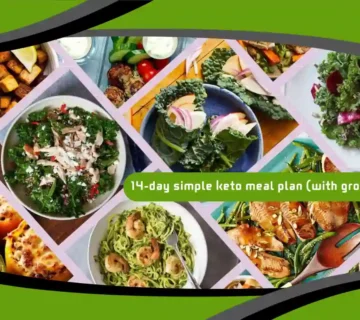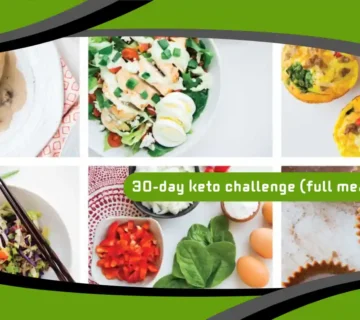Winter brings with it a natural craving for warmth, comfort, and hearty meals. For those on a ketogenic diet, this season offers a great opportunity to explore rich, satisfying meals that align with low-carb living. A Winter Comfort Keto Meal Plan focuses on high-fat, moderate-protein, and low-carb ingredients that provide energy, boost immunity, and keep you cozy without breaking ketosis.
The Role of Fat in Staying Warm and Energized
One of the key elements of a successful keto diet during winter is increasing the intake of healthy fats. Fats act as a dense energy source and help maintain core body temperature. Avocados, olive oil, coconut oil, grass-fed butter, and fatty fish like salmon are ideal components of winter meals. These fats not only support ketosis but also nourish the body during colder months.
Comfort Foods That Keep You in Ketosis
Traditional comfort foods like mashed potatoes, pasta, and pastries are carb-heavy, but keto alternatives are just as satisfying. Cauliflower mash, shirataki noodles, and almond flour baked goods can mimic the textures and flavors of comfort meals while staying low-carb. Incorporating herbs and spices like rosemary, thyme, and cinnamon enhances flavor and has added health benefits.
Building a Balanced Winter Keto Plate
To construct a balanced keto meal, aim to fill your plate with 70% healthy fats, 25% protein, and 5% net carbs. Include a protein source such as grilled chicken or beef, leafy greens sautéed in olive oil, and a creamy keto-friendly sauce. Warm, dense meals help regulate appetite and sustain energy levels through cold winter days.
Soups and Stews as Keto Staples
Winter is the perfect season for soups and stews. A rich bone broth base can be paired with low-carb vegetables like zucchini, spinach, and mushrooms. Add fatty cuts of meat and heavy cream or cheese for depth and richness. These dishes are warming, nutrient-rich, and easy to batch cook for the week ahead.
Incorporating Seasonal Winter Vegetables
Seasonal eating enhances the nutrient profile of your meals. In winter, opt for vegetables such as cabbage, kale, brussels sprouts, and turnips. These are low in carbs and high in fiber and micronutrients. Roasting or sautéing them in ghee or avocado oil brings out their natural sweetness and adds a comfort-food touch.
Keto-Friendly Slow Cooker Meals for Busy Days
A slow cooker is a great ally in winter. You can prepare meals in the morning and come home to a fully cooked keto dinner. Recipes like shredded beef with mushrooms, creamy chicken thighs with spinach, or pulled pork with cabbage slaw provide warmth, convenience, and keto compliance in one pot.
Comforting Keto Breakfast Ideas
Winter mornings call for warm, satisfying breakfasts. Keto-friendly choices include scrambled eggs with cheese and spinach, almond flour pancakes, or chia seed pudding with cinnamon. Adding bulletproof coffee with MCT oil can further boost fat intake and keep you full and energized until lunchtime.
The Importance of Electrolytes in Cold Weather
Colder months can increase the risk of dehydration and electrolyte imbalance, especially on a keto diet. Ensure adequate intake of sodium, potassium, and magnesium through broths, leafy greens, and keto-friendly supplements. Staying hydrated supports metabolism and helps maintain energy levels.
Immune-Boosting Ingredients for Winter Wellness
A winter keto plan should include ingredients that naturally support the immune system. Garlic, ginger, turmeric, and bone broth are anti-inflammatory and antimicrobial. Incorporating these into your daily meals can help defend against seasonal illnesses while supporting ketosis.
Keto Meal Prep Tips for Winter Success
Meal prepping during winter ensures you’re not tempted by high-carb comfort foods. Prepare large batches of keto soups, casseroles, and fat bombs. Store portions in the fridge or freezer to have quick access to keto meals even on your busiest or laziest days.
Staying Active and Warm on Keto
Cold weather can make it tempting to stay sedentary, but light movement is essential to support metabolic health on keto. Indoor exercises like yoga, resistance training, or even brisk walks can help regulate blood sugar and maintain lean muscle mass, which is important during weight loss.
Smart Snacking Without Breaking Ketosis
Winter evenings often bring on snack cravings. Instead of carb-laden chips or cookies, opt for keto snacks like cheese crisps, pepperoni slices, macadamia nuts, or homemade fat bombs. These options are satisfying, keto-approved, and easy to prepare in advance.
Satisfying Your Sweet Tooth with Keto Desserts
Craving dessert is natural in winter. Fortunately, keto offers several indulgent yet low-carb dessert options. Think dark chocolate avocado mousse, almond flour brownies, or coconut milk chia pudding. Using natural sweeteners like stevia or erythritol ensures your treats remain within keto guidelines.
Hot Keto Drinks for Cold Nights
Warm drinks provide both comfort and nutritional support on keto. Keto hot chocolate made with almond milk and cocoa powder, or a turmeric golden milk with coconut cream, can satisfy cravings and provide a metabolic boost. Herbal teas with lemon and ginger are also perfect companions on cold nights.
Navigating Holiday Meals on Keto
Winter brings holidays and family gatherings filled with carb-heavy dishes. To stay on track, prepare keto-friendly versions of traditional favorites like green bean casseroles, cauliflower stuffing, or pumpkin cheesecake. Being proactive and bringing your own dishes can help you avoid temptation and enjoy the celebration.
Eating Out on Keto During Winter
Dining out doesn’t mean derailing your diet. Choose dishes centered around grilled meats, roasted vegetables, and creamy sauces. Ask for substitutions like a side salad instead of fries or extra avocado instead of bread. Many restaurants are happy to accommodate keto-friendly requests.
Maintaining Mental Clarity with Winter Keto
The ketogenic diet is known for enhancing mental clarity and focus. During winter, when fatigue and seasonal mood changes are common, staying in ketosis can help keep brain fog at bay. Fats like omega-3s from salmon and chia seeds support brain health and mood regulation.
Monitoring Your Progress and Staying Motivated
It’s important to track your keto journey during the winter months. Use apps or journals to log meals, measure ketone levels, and celebrate milestones. Seeing progress helps you stay committed and can be especially motivating when the cold weather tempts you to stray.
Customizing the Plan for Your Body and Goals
Every individual’s needs vary based on activity level, age, and health status. Some may benefit from cyclical keto, where carb intake is slightly increased once a week to support metabolism and hormones. Listening to your body and making data-driven adjustments ensures the plan supports your overall wellness




No comment